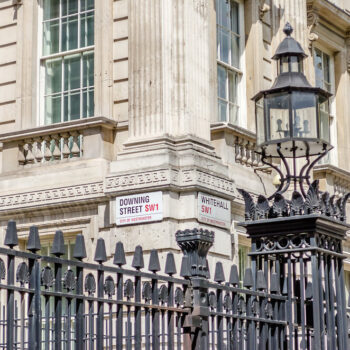The how, the what, and the who of selling the Green Investment Bank
It has not been the greatest start to the year for financial market to say the least. One consequence of this, of course, is the delay in the further sale of the government’s stake in Lloyds Bank. The Government is however ploughing on with the sale of its stake in another financial institution acquired in part as a reaction to the global financial crisis: the Green Investment Bank.
How will it be sold, what are people buying, and who might buy it?
The good news for prospective buyers of the GIB is that the government can hardly be accused of pumping the stock ahead of the sale, as last summer’s privatisation announcement has been followed by an array of cuts to support for the green economy.
The how
There are two ways for the private sector to “buy” the apparently preferred level of 70% of the GIB.
Someone could subscribe for new shares or they could buy existing shares.
The first involves someone subscribing for c.£5-6bn of new shares and hence injecting that new capital into the GIB. This would leave the £2.5bn or so of government money that will probably be spent by the time of the sale in the GIB. This trebles the GIB’s available capital and hence is consistent with the privatisation’s objective of expanding the GIB’s access to capital for future investment and growth.
However, given that the government has cancelled the future until further notice and the general propensity of investors to focus on existing assets, this is unlikely to be the approach.
The second and most likely route to privatising 70% is to sell that proportion of the existing shares: so the government gets most of its investment back and an investor pays 70% of say £2.5bn which is £1.75bn, for its share of the company as is. This second approach does not give the GIB any new money to invest.
The what
So what would an investor get if they bought the GIB today?
Very roughly, based on the c.£2bn invested by the time of its last annual report, the GIB has spent about 50% of the money the government has given it on shares in offshore wind farms; 25% on waste and bioenergy investments; and 25% has been invested with third party fund managers in what the financial community would call a “fund of funds” business. The third parties in the latter category focus on smaller scale investments in a variety of green sectors.
Looking after these three business areas is a team of c.120 people which costs about £30m per year to run.
The £1bn or more of investment in offshore wind farms is probably the most sought after asset by private sector investors. These assets do give roughly the return the GIB claims, there is a lot of interest in such investments by the private sector, and its portfolio has the benefits of scale and diversity.
That’s a good start, but perhaps impatient with the government privatisation process, the GIB appears to have been privatising itself in this area over the past year or so, with many of these assets already sold into its own new offshore wind fund. This fund already has third party investors in it, and so what an investor in the GIB itself gets in offshore wind is not the assets themselves, at least not in all cases, but the contract to manage other people’s money investing in those assets.
The c.£500m or so invested in waste and bioenergy projects is also probably a pretty sensible and stable investment portfolio. Given the strategy in offshore wind, this is surely begging to be made into a waste and bioenergy fund.
Finally, there’s the just less than £500m invested in the fund of funds business. The truth about this is that while it is invested with knowledgeable and competent third parties, investors who look at multi-billion pound deals tend not to be too interested in investigating the merits of investments of odds of millions made via third parties (the average deal size in this area is c.£5m compared to c.£150m in their offshore wind portfolio, based on the last annual report). There is also a general dislike of fund managers hiring other fund managers. So this looks a bit small and complicated for a new investor to understand and hence looks like a prime candidate for the retained government stake, at least until the individual funds prove themselves at which time they can probably be sold in the market (at the time of the last annual report about a third of this money had been deployed in investments).
Sadly, if you are still looking for ways that this can be about increasing the GIB’s financial fire power, none of this looks desperately easy to borrow against, hence any funds for new investment would be at the discretion of their new owner or require the GIBs funds to be expanded.
Therefore the GIB looks like it is two medium sized funds: one in offshore wind and one in waste and bioenergy, and a few legacy investments in third party funds.
The who
We know some people who won’t be buying it and that is you and me.
Apparently an IPO or public offer is not on the cards and hence the dream of the general public investing their pensions savings in saving their grandchildren’s future has died. This despite the fact that, whatever the government’s recent cuts, we will all keep paying the now infamous green levies which support the GIB’s investment returns. If you are one of the those people who hasn’t quite made it past page 26 of Thomas Pickety’s “Capital in the Twenty First Century”, then now you don’t need to bother: everybody pays, a few make the gains is about the gist of it. See above.
The good news for those running the sale is that there are a lot of other medium-sized fund managers out there who wouldn’t mind having another couple of new funds to run. Hence it should be relatively easy to sell.
And, of course, here lies the shame in it all. If it goes as described here then it has absolutely been done before. In fact it has been done before without a penny of public money to back it.
Remind me again why we have a GIB?
The market failure that the GIB was created to solve was not to "prove that green investing can be profitable" as is often claimed. The fact is that the golf courses of the UK and ski lodges of Europe are well populated with people who have made a few quid out of green investing over the last 20 years or so. Private equity has been in offshore wind and waste to energy since the early 2000s.
The market failures were and remain all about scale. A government intervention such as creating a GIB was and is needed because if left to the private sector alone green investing will focus too heavily on the present at the expense of the future; it will remain the domain of small and medium sized investment funds; and capital will continue to be allocated to those funds from a tiny corner of our stock of pension savings.
None of this drives the scale of investment required to transform our energy system at an acceptable cost of that capital to the final consumer.
A GIB where the government cashes out and where no material new capital is raised, while creating another medium sized green fund manager simply proves that even with the power of the UK government (temporarily) behind it, we cannot imagine the scale of low cost financing required for the task at hand.
There is another way. Leave the government's money where it is; add material new capital; give the British public a stake in the outcome and create a partnership between the public and private sectors which puts green investing at a materially larger scale than has been achieved before, or that would be achieved without a GIB intervention.
This is the unique institution that people campaigned so hard to create in the first place.
This article was written by Ian Temperton and first appeared in Business Green.


